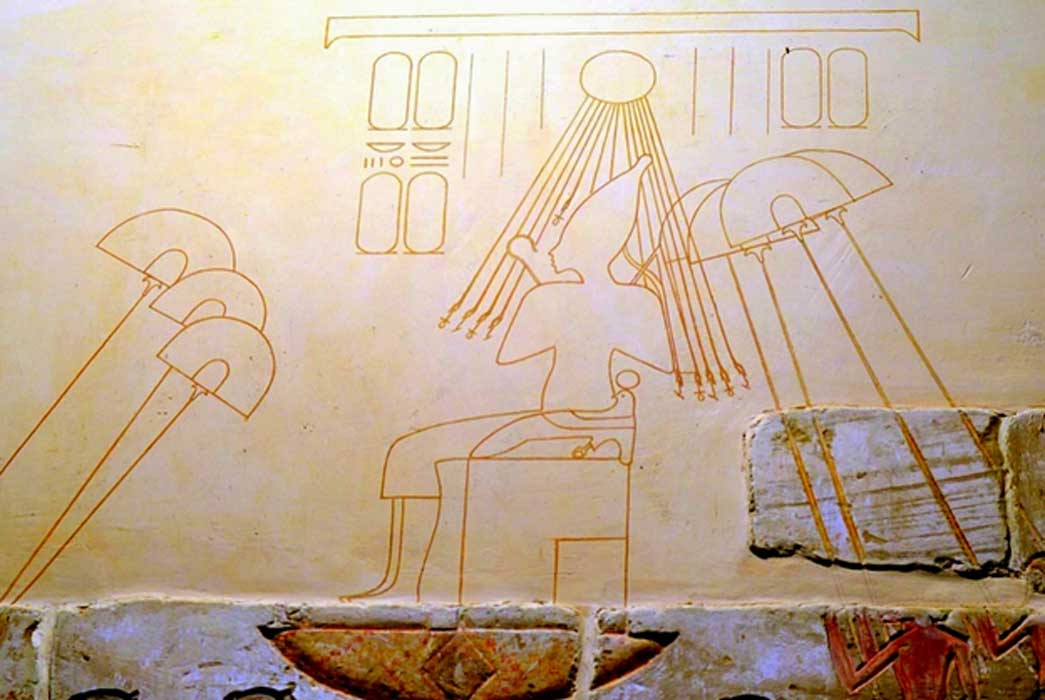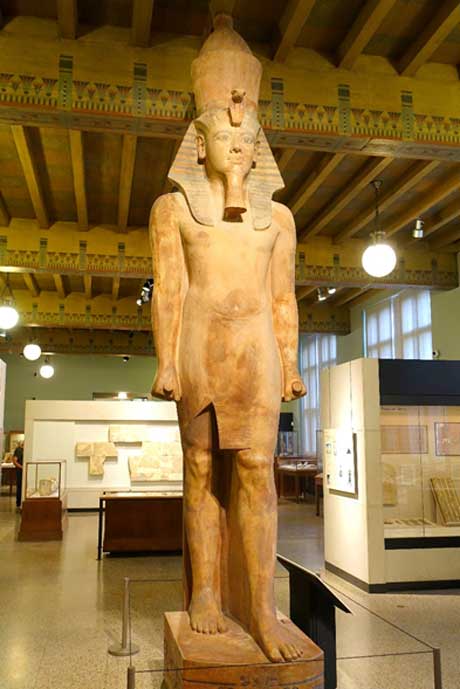
Objects of Wonder: The Symbolism and Suspense behind Ancient Egyptian artifacts
Ancient Egypt was a land of great mystery and intrigue. Her secrets were not easy to comprehend, even if they were hidden in plain sight. It still takes a keen eye to understand the deep philosophy embedded in not just the wealth of texts and inscriptions, but everyday objects too.
A Tut Mystery in Chicago
A massive statue, traditionally thought to depict King Tutankhamun, was one of a pair excavated by the Architectural Survey of the Oriental Institute, Chicago, under the directorship of Dr. Uvo Holscher; its companion is now located in the Egyptian Museum, Cairo. It was discovered in 1931 near Medinet Habu in the ruins of the memorial temple of the person who assumed power next, Pharaoh Aye. The thorny question of the existence of a mortuary temple of Tutankhamun thus arises.

All that remains of Tutankhamun’s purported mortuary temple at Medinet Habu. It is more likely that the structure was commissioned by his predecessor, King Aye, considering he was advanced in years when he assumed the throne.
As the ruler, Aye is said to have carved his name over that of his predecessor. However, after he died following a brief reign, the military commander Horemheb came to the throne, usurped this statue, chiseled out Aye's cartouches on the back pillar, and had his name inscribed on it instead. This is the story much of the world believes.
The difficulty in understanding who is depicted on this royal statue arises because the face of Tutankhamun is not remotely uncommon. The only problem is that they are universally renamed; almost exclusively with that of Horemheb. Renowned Amarna expert, Dr Aidan Dodson shared his insights with the present writer: “There are now significant doubts as to whether they ever belonged to Tutankhamun - the palimpsest texts are of Ay, and it seems far more likely that they were taken over in-situ with the temple, rather than transferred from Tutankhamun's never-located memorial temple.”
Concurring with this postulation, British Egyptological researcher, Dylan Bickerstaffe says: “It is just the youth of the statues that led to the attribution to Tutankhamun. They don't actually look like him. Everything else found at the Ay/Horemheb temple was of those two. There are areas of flooring etc., surviving in situ at the site. It may have been taken over from Tutankhamun, but Horemheb did a good job of usurping the monuments of his predecessors, and columns from the location clearly carry his names. The statues could be Tutankhamun, but they are not 'typical' and could be Ay, or, of course, Horemheb.”
However, differing with this view, leading Egyptologist, Dr Peter Lacovara states, “Ray Johnson examined the statues and thinks that they represent Aye, not Tutankhamun, but the quarrying may have been begun by Tutankhamun for the temple which was founded by him.”

This gigantic quartzite statue has caused much confusion over the years as to the identity of the king it depicts; with most people assuming it portrays the likeness of Tutankhamun (Public Domain). However, after studying the palimpsests scholars now believe that there is no evidence that it represents the boy-pharaoh, but Aye from whom Horemheb usurped it.




